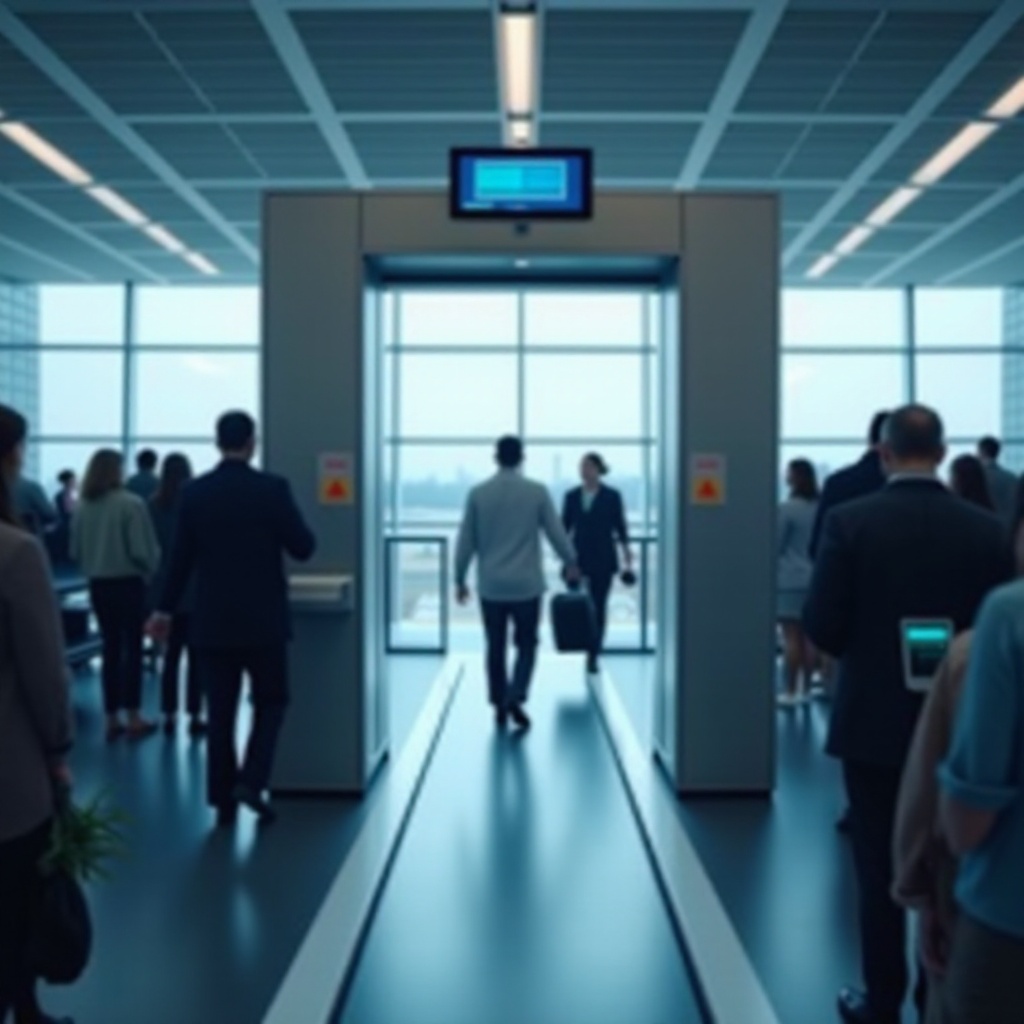Introduction
Airport security scanners are essential for ensuring the safety of passengers and airline staff. Understanding the technology behind these scanners can help alleviate some of the anxiety that comes with air travel. This detailed guide will delve into the types of security scanners used at airports, the technology behind them, their safety implications, and the latest innovations.

History and Evolution of Airport Security Scanners
Airport security has evolved significantly over the years. Initially, security checks were minimal, but the escalating threat of terrorism necessitated more sophisticated technology. Early scanners were mostly metal detectors, but security breaches led to the development of more advanced systems. The introduction of X-ray scanners in the late 1970s marked a pivotal shift, and post-9/11, Advanced Imaging Technology (AIT) scanners became the norm. This evolution has constantly aimed to enhance security while ensuring passenger convenience.
Types of Airport Security Scanners
To fully grasp how airport security scanners work, it’s crucial to know the different types of scanners in use today.
Metal Detectors
Metal detectors are the most common and are typically used for screening passengers’ bodies. They detect metallic objects via electromagnetic fields.
X-ray Scanners
These scanners are often used to inspect luggage and carry-on bags. They generate detailed images of the contents without the need to open the baggage.
Advanced Imaging Technology (AIT) Scanners
AIT scanners include two primary types: millimeter-wave technology and backscatter X-ray technology. These advanced scanners can detect a wide variety of threats without the need for physical contact.

How Metal Detectors Work
Metal detectors operate using electromagnetic fields. When a passenger walks through the scanner, the device sends out a magnetic pulse. This pulse creates an electromagnetic field, and when metals disrupt this field, the detector senses the anomaly and triggers an alert. This process happens almost instantaneously. Metal detectors are highly effective for finding weapons such as guns and knives but are limited to metallic items.

How X-ray Scanners Work
X-ray scanners use low-dose radiation to penetrate luggage and create images of its contents. The machine projects X-rays through the bag onto a detector on the opposite side. Different materials absorb X-rays at varying rates, allowing the scanner to produce a contrast image. Dense materials like metals appear white, while less dense materials like liquids show up in shades of grey. Security personnel examine these images to identify potential threats.
How Advanced Imaging Technology (AIT) Scanners Work
AIT scanners enhance security by detecting a wide range of threats beyond just metal objects.
Millimeter-Wave Technology
Millimeter-wave scanners use non-ionizing radiofrequency waves to generate detailed, three-dimensional images of a passenger’s body. These waves pass through clothing but reflect off the skin, revealing concealed items without physical contact. A software analysis highlights potential threat areas on a generic human figure, ensuring privacy.
Backscatter X-ray Technology
Backscatter X-ray scanners emit low-energy X-rays that reflect off a passenger’s body. These reflected X-rays produce detailed images of the body surface, highlighting hidden items. Unlike millimeter-wave scanners, backscatter machines provide more detailed imagery but have raised concerns over radiation exposure.
The Role of Security Personnel
Human oversight remains critical in the security screening process. Security personnel monitor scanner outputs, interpret images, and conduct secondary screenings if necessary. They play an essential role in identifying ambiguous items and ensuring the smooth flow of passengers through security. Their training equips them with the skills to handle various scenarios and maintain airport security integrity.
Safety and Privacy Concerns
The use of airport scanners has raised safety and privacy concerns. While metal detectors are generally considered safe, some travelers worry about the radiation from X-ray and backscatter scanners. However, experts assure that the radiation levels are well within safety limits. Privacy is another critical issue, particularly with AIT scanners that generate detailed body images. To address this, most airports use anonymized images and automated threat detection software to protect passengers’ privacy.
Enhancements and Innovations in Scanner Technology
Airport security technology is continually advancing. The latest innovations focus on enhancing efficiency, reducing wait times, and improving threat detection. Automated screening lanes, artificial intelligence, and machine learning algorithms are making scanners more effective. Research is ongoing into using biometric data, like facial recognition, to streamline the screening process further.
Conclusion
Understanding how airport security scanners work provides valuable insights into the safety measures in place for air travel. The sophisticated technology and diligent work of security personnel ensure our skies remain safe. With ongoing advancements, airport security will continue to evolve, balancing safety, efficiency, and passenger experience.
Frequently Asked Questions
Are airport security scanners safe for pregnant women?
Yes, airport security scanners, including metal detectors and millimeter wave scanners, are safe for pregnant women. They do not use ionizing radiation.
Can airport scanners detect drugs?
Yes, while airport scanners primarily detect threats like weapons, they can also identify drugs. Security personnel may perform additional checks if they notice suspicious items.
How long does it take to pass through airport security scanners?
The time it takes to pass through airport security scanners can vary but typically ranges from a few seconds to a couple of minutes, depending on queue length and the need for additional screening.